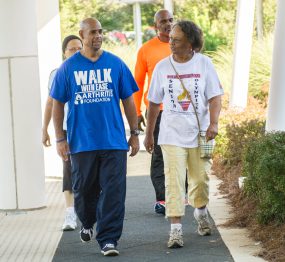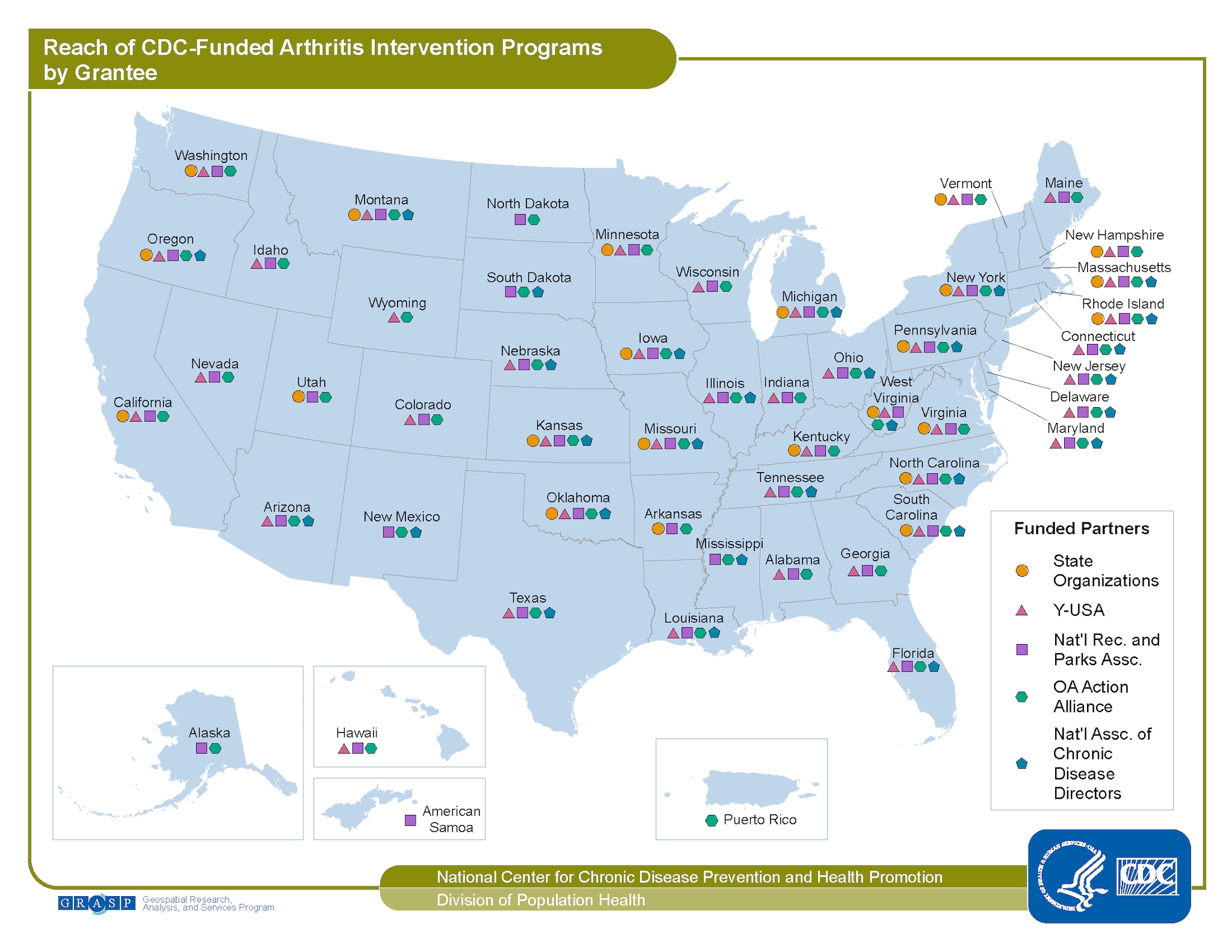CDC Arthritis Management and Well-Being Program’s Reach
The National Association of Chronic Disease Directors (NACDD) is using CDC funding to help national and state partners improve arthritis outcomes and quality of life. NACDD has developed a short video that highlights the successful efforts of these partners to advance arthritis prevention practices during COVID.
New York State: Expanding EnhanceFitness to Improve Arthritis Outcomes
Lifestyle management programs like EnhanceFitness can help adults with arthritis get active and feel better. With CDC funds, the New York State Arthritis Program collaborated with local YMCAs to deliver EnhanceFitness to adults. Because of these efforts, the program is available at 40 locations in 22 counties.

CDC works with national organizations and states to improve the quality of life for adults with arthritis. Since 2012, in collaboration with a variety of states and national partners, CDC has reached more than 300,000 adults with arthritis-appropriate, evidence-based interventions (AAEBIs) that can improve arthritis management and quality of life. Through CDC-funded partnerships, these scientifically proven arthritis programs are available in all 50 states, the District of Columbia, Puerto Rico and American Samoa.
Three of the national organizations that CDC funds—the YMCA of the USA (Y-USA), the National Recreation and Park Association (NRPA) and the University of North Carolina Osteoarthritis Action Alliance (OAAA)—make available CDC-recognized physical activity programs that have been proven to reduce pain and improve function, mood, and quality of life for adults with arthritis. The NACDD was previously funded to disseminate and expand the reach of AAEBIs.
In addition to the national organizations’ activities, CDC previously funded 13 state health departments to disseminate and expand the reach of proven AAEBIs. States worked with community organizations to make these programs part of their routine operations and sustain them over time. CDC currently funds 12 state programs, which build on lessons from the state health departments to expand lifestyle management programs through large access networks and existing systems.

A text version of this map is available at https://www.cdc.gov/arthritis/about/text-version.html.
With CDC funding, state programs have expanded access to AAEBIs in the United States. Below are brief snapshots of notable achievements by state arthritis programs under the DP12-1210 State Public Health Approaches to Improving Arthritis Outcomes cooperative agreement program:
California
Achieved the highest participant reach numbers and the second highest percentage of their CDC designated participant reach goal. Also helped create and maintain a statewide online program locator.
Kansas
Trained 479 individuals as master trainers or course leaders, cultivated 20 delivery systems partners, and established a statewide site for program registration and referral.
Kentucky
Collaborated with state aging and university rural health partners to greatly expand access to the Chronic Disease Self-Management Program (CDSMP) to residents of economically distressed rural Appalachian counties experiencing high rates of chronic disease.
Michigan
Achieved the second highest participant reach numbers. Created sustainable partnerships to expand access to CDSMP and EnhanceFitness across the state, and to adults with disabilities in particular.
Missouri
Fostered a sustainable partnership with the Mississippi County Health Department to significantly increase access to CDSMP for residents of 13 rural counties in Southeastern MO experiencing high rates of chronic disease.
Montana
Attained the highest percentage of their CDC designated participant reach target. Continues to sustain Walk with Ease—Self-directed as a state-employee wellness incentive benefit.
New York
Created partnerships and achieved stakeholder support for AAEBI integration into statewide initiatives. Fostered statewide data sharing and cross-leveraged diabetes funds for arthritis campaigns.
Oregon
Significantly increased AAEBI participation statewide. In 2013, 14.7% of adults with doctor-diagnosed arthritis participated in a class, whereas by 2017, 16.3% had participated in a class.
Pennsylvania
Established a statewide program locator and sustained a strong partnership with the Health Promotion Council which expanded access to Walk with Ease across the state.
Rhode Island
Fostered inclusion of AAEBIs in the state’s Community Health Network centralized program locator and bi-directional referral system for evidence-based programs throughout the state. Enhanced coordination and infrastructure for CDSMP statewide via Aging and other partners.
South Carolina
Successfully engaged the Federal Bureau of Prisons to implement CDSMP in all four federal correction institutions in the state, with potential for expansion throughout the federal prison system.
Utah
Collaborated with a major healthcare system, quality improvement organization, and local health departments to expand AAEBIs to rural and frontier counties in the state.